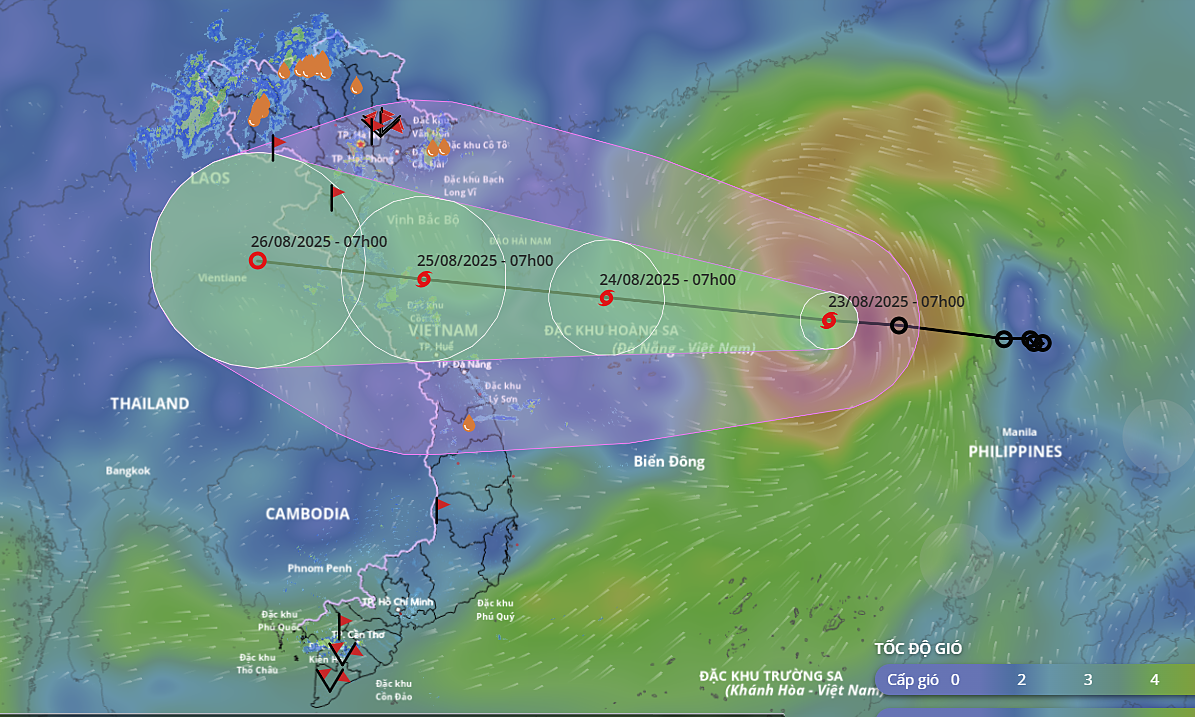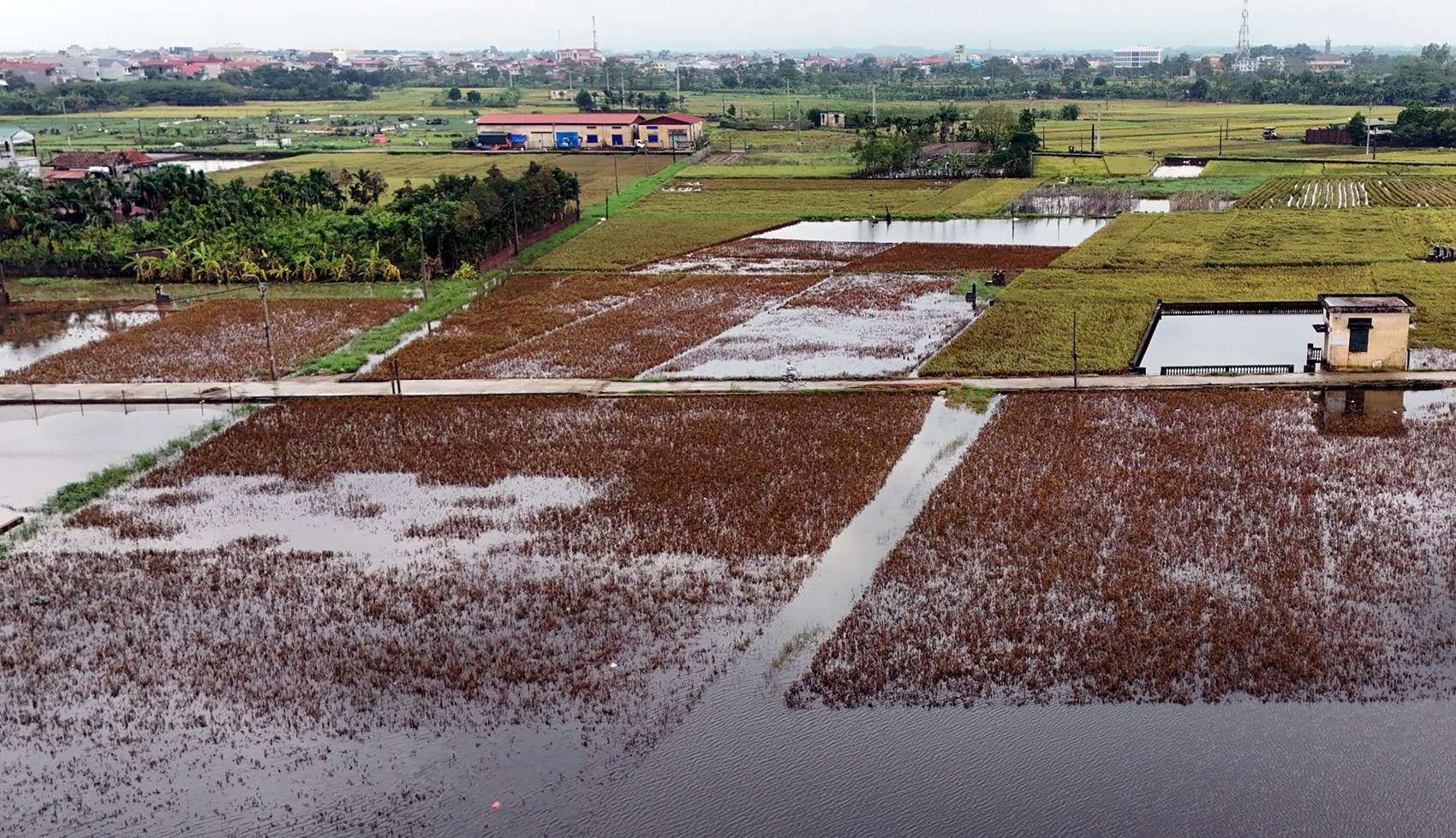OPINIO
Original content
Typhoon Kajiki made landfall in Vietnam on August 25, unleashing winds of 118–133 kilometres per hour , devastating the country’s coastal provinces. Authorities warned that the storm could match the destructive force of Typhoon Yagi, the most powerful storm in 30 years, which claimed 300 lives in 2024. Nearly 600,000 residents were evacuated from vulnerable areas, including Hà Tĩnh, Thanh Hóa, Quảng Trị, Huế, and Đà Nẵng, as floodwaters rapidly rose. Early damage assessments indicate that approximately 7,000 homes have been destroyed or severely damaged, forcing thousands of families into emergency shelters. The impact on agriculture has been mixed amongst key crops grown in the country such as coffee and rice.
Figure 1. The Trajectory of Typhoon Kajiki

Typhoon Kajiki brought heavy rainfall and widespread flooding to Vietnam's north-central provinces, inundating approximately 28,800 hectares (ha) of rice fields. The provinces most affected, Thanh Hóa, Nghệ An, Hà Tĩnh, Thái Nguyên, and Phú Thọ, saw significant crop losses due to prolonged submersion and soil erosion. While rescue and drainage operations are underway, many farmers in these regions face the risk of total crop failure, especially in fields where the rice plants were nearing maturity. Early estimates suggest localized production setbacks, though national output remains largely stable because the storm’s path spared key producing regions in the south.
Kajiki's landfall in late Aug-25 coincided with a particularly vulnerable period for rice cultivation in the northern and central regions. This phase, just before the main harvest, meant that plants were at a critical stage of development, making them highly susceptible to storm damage. The extent of losses will depend on factors such as drainage efficiency and the maturity stage of crops at the time of flooding. Farmers in affected areas now face replanting costs and potential income losses, heightening financial pressures in already fragile rural economies.
Figure 2. Submerged Rice Fields in Hanoi, Vietnam

Despite the localized damage, Vietnam’s national rice supply and export potential remain strong for 2025. Responsible for the bulk of rice exports and overall production, the Mekong Delta remains unaffected by Typhoon Kajiki. With favorable conditions in the Delta and ongoing advancements in production techniques, Vietnam is still on track to maintain its position as the world’s second-largest rice exporter in 2025. However, the government may revise production and export projections slightly to account for the losses in the north-central provinces.
Despite the notable impact on rice production, the direct impact of Typhoon Kajiki on Vietnam’s coffee production is expected to remain limited. The storm primarily struck the north-central regions and weakened as it moved inland, sparing the Central Highlands where 90–95% of the country’s coffee is cultivated. Instead, these coffee-growing areas experienced increased rainfall and cooler temperatures from the storm’s peripheral effects, which, so far, have not caused significant damage to crops.
Kajiki’s arrival exacerbates what has already been a challenging season for Vietnamese coffee producers. Severe drought conditions in 2024 and early 2025, driven by the El Niño phenomenon, disrupted the flowering and bean development stages of coffee plants, cutting production forecasts for the 2024/2025 crop by up to 20%. These conditions also delayed the Robusta harvest by several weeks and led to smaller bean sizes, tightening global supply. While Kajiki’s immediate damage to coffee fields is minimal, the storm adds to a broader narrative of climate-related instability that has become a defining feature of the industry.
In the short term, the storm’s impact is likely to result in localized supply disruptions and temporary price adjustments in domestic markets, especially in the affected provinces. However, the overall export trajectory remains stable, buoyed by strong performance in the Mekong Delta. Longer term, Typhoon Kajiki serves as another reminder of the growing climate-related risks facing the agricultural sector, highlighting the importance of scaling up investments in resilient infrastructure, advanced drainage systems, and climate-smart agriculture to mitigate future losses.
For market stakeholders, leveraging data analytics and climate modeling tools, through solutions like Tridge Eye, is becoming essential for informed decision-making. By integrating weather forecasts, satellite imagery, and historical climate data, companies can better anticipate disruptions, adjust inventory levels, and optimize logistics. These insights also support long-term planning, helping businesses identify emerging production zones in higher-altitude or less climate-vulnerable areas.
Read more relevant content
Recommended suppliers for you
What to read next